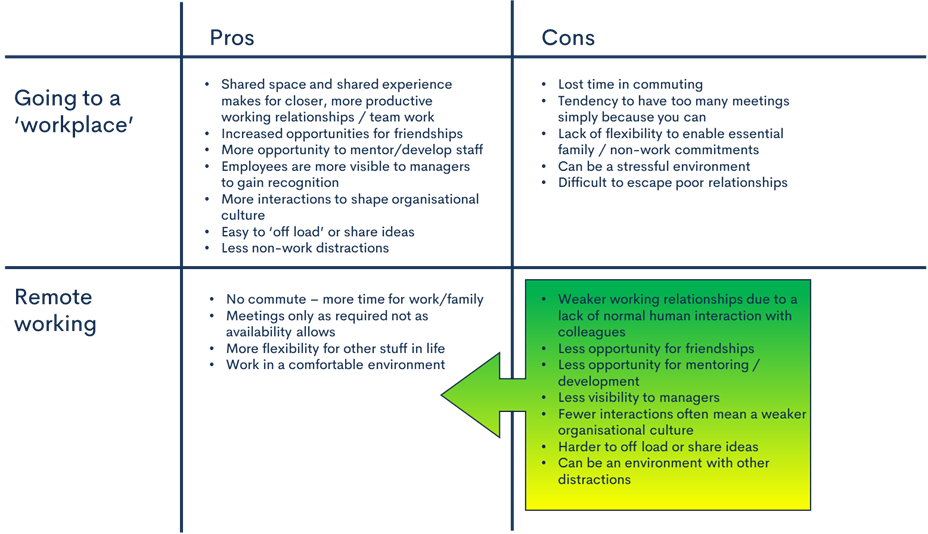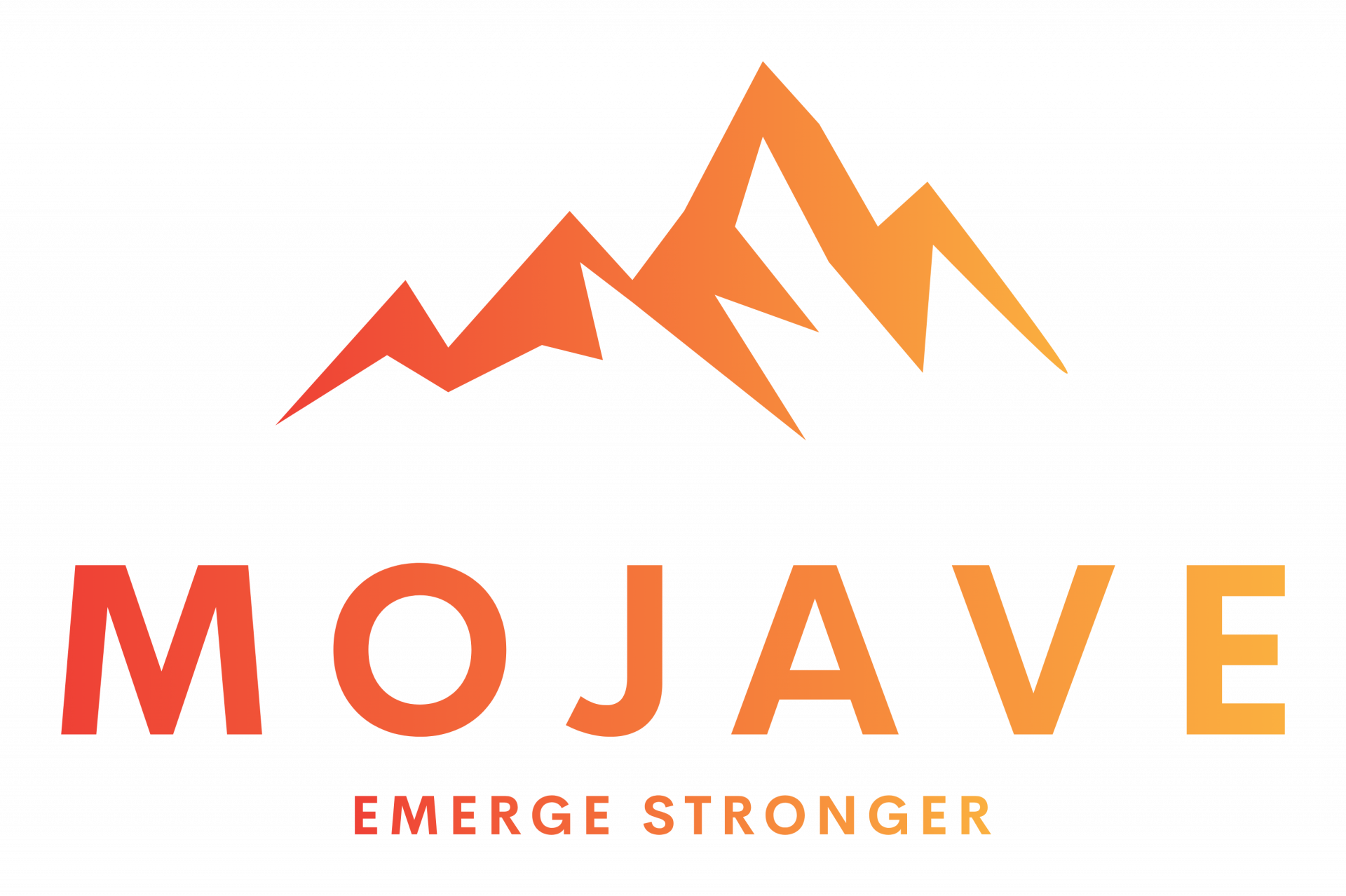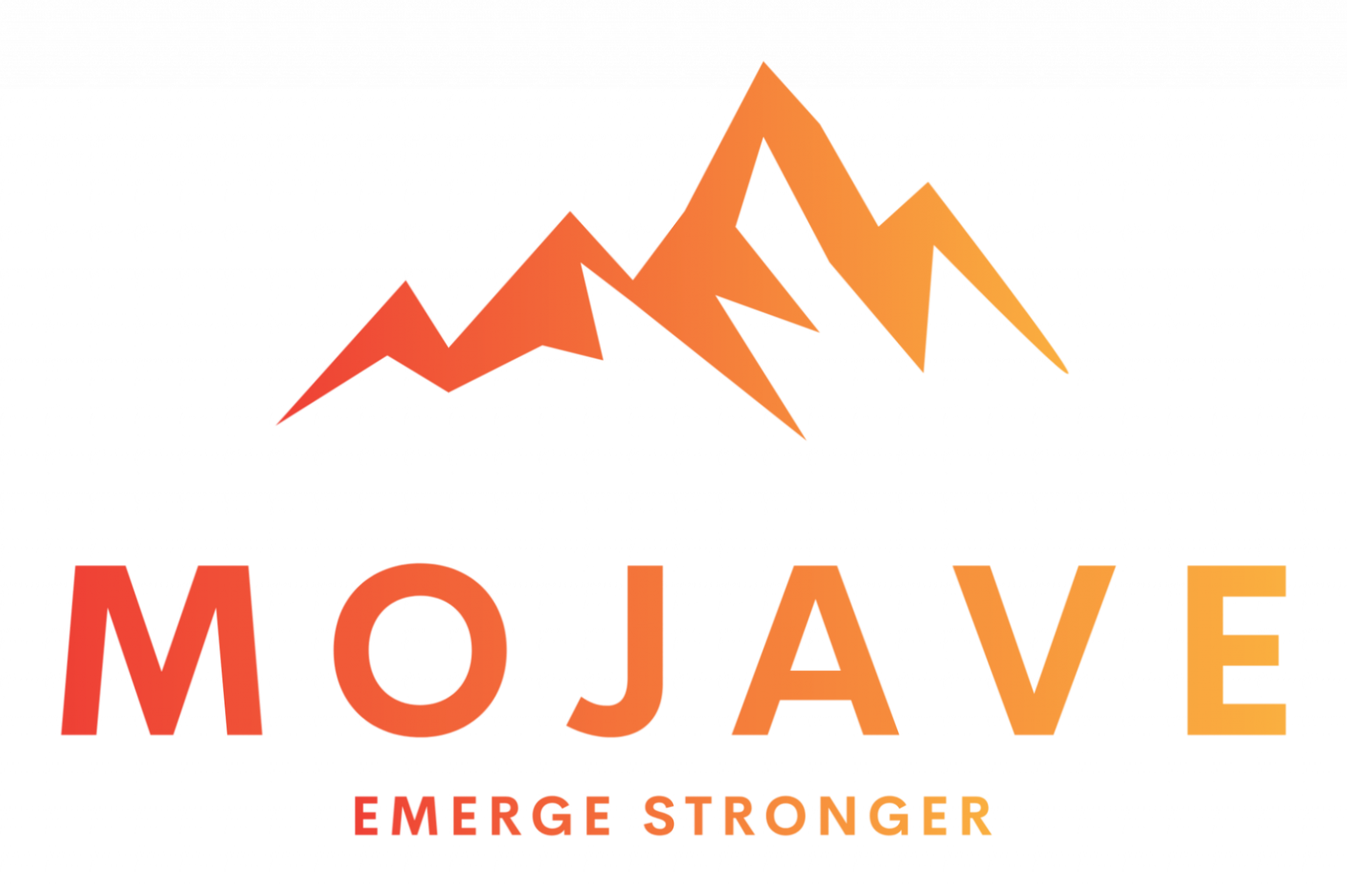A workplace revolution? Really?
The world of work has changed. Some people rejoice in the demise of the office. Others hark for its return.
Here we try to dial down the loudest voices on each side of the debate and look at a more balanced view of what the issues actually are, and options businesses have when considering how to get the best overall effect for their people.
Introduction
The ‘brave new world of work’ is awesome! How different it is to 20 years ago.
When the internet arrived, it transformed the world of work. New ways of accessing information changed how businesses operated and so changed what people did in those businesses.

Then processing power enabled more data to be processed more quickly. Connectivity infrastructure ran to keep up enabling more data to be transmitted to processers more quickly. Things that initially had to be done on officer servers could soon be done at home, or even sat on a bus. Eventually all you needed was a laptop and a coffee shop. There’s a scene in The Big Short where the character played by Brad Pitt, Ben Rickert, is seemingly making $200,000,000 deal in a pub (I like to think it’s true). Says it all…
The flexibility offered by the world of work today is amazing. Have a doctors appointment? Work from home. Kids off school? Work from home. Global pandemic? Work from home! Yes, the fact we could all – in theory – do $200,000,000 delas from our laptops at our kitchen tables as the kids colour dinosaur pictures is awesome. But every action always has an equal and opposite reaction. So what is the reaction, the trade off, to this increasing trend of working in a business but from a home?
The flexibility offered by the world of work today is amazing. Have a doctors appointment? Work from home. Kids off school? Work from home. Global pandemic? Work from home! Yes, the fact we could all – in theory – do $200,000,000 delas from our laptops at our kitchen tables as the kids colour dinosaur pictures is awesome. But every action always has an equal and opposite reaction. So what is the reaction, the trade off, to this increasing trend of working in a business but from a home?
Every action has a…
While working form home (WFH) has its benefits (massively flexibility, no commute, accessibility, etc) there are also benefits to being in the office. There were justifiable reasons why many bosses (and Jacob Rees Mogg) were keen to get people back to the office - being in an office is generally accepted to more greatly enable:
- Visibility of employees. Visibility at work is good for both employees promotion and development/mentoring prospects, also good to ensure further guidance can be provided when necessary where some workers aren’t quite sure of what they need to do but might be afraid to ask.
- Healthy working relationships. While not all co-workers are necessarily our first choice for room mates on a long weekend away, most will be people we can share experiences with, have a joke with, off load our gripes on (about work or family) or indeed learn and get ideas from. All this stuff promotes healthy relationships which drive employee engagement and ultimately productivity.
- Improved wellbeing. Unless you have people at work you really don’t like, especially a toxic leader, then spending time with like minded grown ups can be good fun (I think many of us found this out during the pandemic). The closer relationships decrease any sense of isolation that might otherwise be felt if you go home to an empty flat or a home which only has some screaming kids in it (screaming kids are fine of course, but if they’re the only ones you get to spend your day with all the time…). The pandemic exposed the potential loneliness of WFH in fairly stark terms for many. A shared work environment, be that office, factory, warehouse or shop floor, can provide a space to counter that.
- Stronger company culture. Organisational culture is hugely impacted by the interactions people have day to day. If people are having less interactions with people in the business, and so less time reinforcing the values of the business, then those values won’t be felt as strongly by the employees and the desired company culture is more easily eroded over time. Rarely a good thing.
How do workplaces achieve these great effects? Because they bring people together so that they share both the same physical space and in doing so share the same experiences, and few things are more bonding than shared experiences. It is the relationships that create things like culture and promote or degrade productivity in teams. So by removing or reducing the opportunity to share space and experience from our people, we have an impact on the very relationships which have such a significant impact. ‘Every action has an equal and opposite reaction’ after all.

Alternatives to the work space
So what might be the answer? How can we enable WFH or hybrid options but minimise the lose of the benefits of a shared workspace?
Now we are most certainly not saying everyone should get back to the office! But we are saying sharing physical space with our co-workers is good for individuals personally and professionally, and it’s also good for the business too. So businesses that have a large WFH element, or even a hybrid workforce, need to consciously consider the extent to which they can provide healthy shared spaces for their employees. The great news is, that doesn’t necessarily mean you have to get everyone to work.
Research has shown that as well as being preconditioned to be social creatures who much of the time like shared spaces, people are also preconditioned to enjoy being in nature. And nature offers a huge array of varied spaces that we can share with others. And once there, we can choose to either talk about work, or just focus on building relationships with our co-workers to enable greater productivity in work later!
You don’t even need to ‘get out there’ in to nature too often. A couple of really good ‘team days’ – though the term is often viewed which such cynicism, let’s try out ‘co-curricular events’ as that more closely captures the fact that these things have a practical business benefit… A couple of really good co-curricular event days per year could well work wonders for your people and your department or business.
And being in a shared space, somewhere ‘a bit different’, doing something physical, is also an experience that can be shared. Consequently getting you and your team outdoors can really be quite powerful for increasing the bonds between them and as a group. In turn, that should work wonders for the group dynamics and productivity. The idea here is that by simply getting ‘out there’, into real (not ‘metaverse’ open spaces) we get to move some of the disadvantages of remote working from the ‘Cons’ column back into the ‘Pros’ column as shown in the diagram below. In short, we aim to get closer to a ‘best of both worlds’ option.

“But they’re a pain to arrange…” I hear you wail. No! There are many providers out there who can do this for you quickly and easily and deliver something far more effective with far less work (i.e. deliver better value) than you could do trying to shoehorn it into everything else on your plate. Teams like Tiptoparoo. These guys have their heads well and truly screwed on. They get the business benefits they’re seeking to deliver and they get that everyone is different, so whether your ‘thing’ is some hard core endurance competition, yoga on a hillside or simply a walk, some banter and a pub meal, they can knock up the ideal day (or longer) for you and your team to reinvigorate some of the business benefits of sharing the same space. And if you want to add solving real business challenges into the mix while your team is together and free of the day-to-day distractions, they can do that too. Be it big stuff like business strategy or more specific stuff like cracking that difficult client conundrum.
So, “The world of work has changed!” Agreed.
“It’s never going back.” Sure – a greater mix of options is here to stay.
“The office is dead!” Probably not. But whether it is or not, lets make sure we don’t mistake a revolt against the office as a irrefutable truth that sharing physical space is not good for productivity.
Shared spaces have a tangible business function. Getting your people out in to nature offers a pretty invigorating setting to prove that.


Please contact me!
Please get in touch with more information about the Mojave Strategy Expedition Programme, and show me how my organisation can emerge stronger.
Thank you!
Karen Goldring FCIPD
Karen had an extensive and hugely successful career in strategic HR before becoming a leadership coach. From rapid growth SMEs to large global corporates, Karen has gained immensely valuable insights and a thorough understanding of what it takes to make people and their teams high performing. She has particular experience working within fast paced tech companies.
A qualified Insights Practitioner - one of the leadership models we wholly rate here at Mojave due to its pragmatism and relevance to lived experience - Karen offers teams and their members the ability to really understand themselves and each other. From the informed start point that results from the Insights process, Karen will work with you to identify the objectives that matter most to you and your organisation, and ensure you get there.
Click below to learn more about Karen and whether she’s the right kind of coach for you..
Piers Mummery
He has
built, grown, sold, bought funded and capitalised a whole range of businesses,
and he’s learned loads in the process. One of the things he’s learned is
that he loves helping others do the same.
As he says on his website, there are no magic answers, but applying a few basic fundamentals well, consistently and in the right way for you and your business is key. And it’s that acknowledgement that the right way will vary for each of us that means we are proud to work with Piers as a coach who is totally aligned with our own values and philosophy.
As he says on his website, there are no magic answers, but applying a few basic fundamentals well, consistently and in the right way for you and your business is key. And it’s that acknowledgement that the right way will vary for each of us that means we are proud to work with Piers as a coach who is totally aligned with our own values and philosophy.
Click below to learn more about Piers and whether he’s the right kind of coach for you..
Rachel Smith
Formerly an architect, Rachel herself began to realise that she could process and articulate her own ideas far more effectively through visuals. What began as a process to enable her to be more effective in her own career soon evolved into a process that could help others exceed in theirs.
As an accredited executive coach and visual thinking teacher, Rachel’s incredible skills enable her to draw the thoughts and ideas her clients articulate. Being able to ‘see what you say’ as you work through each session can be incredibly powerful in enabling you to identify new connections or blockers that can otherwise remain hidden.
Click below to learn more about Rachel and whether she’s the right kind of coach for you..
Write your awesome label here.
Notify me!
When the next series of Leading People online workshop dates are released.
Thank you!
Leading Operations
Thank you!
Write your awesome label here.



